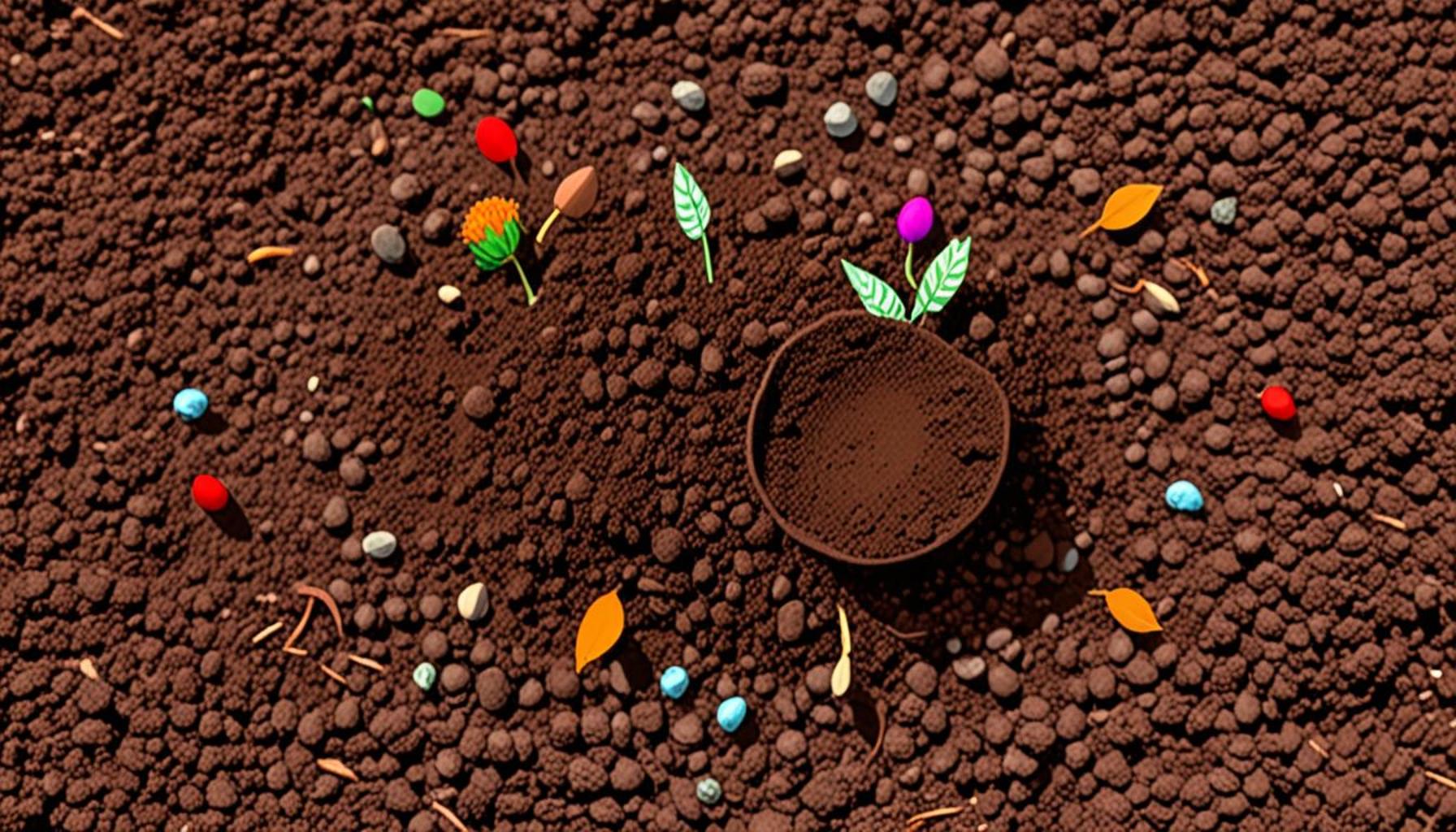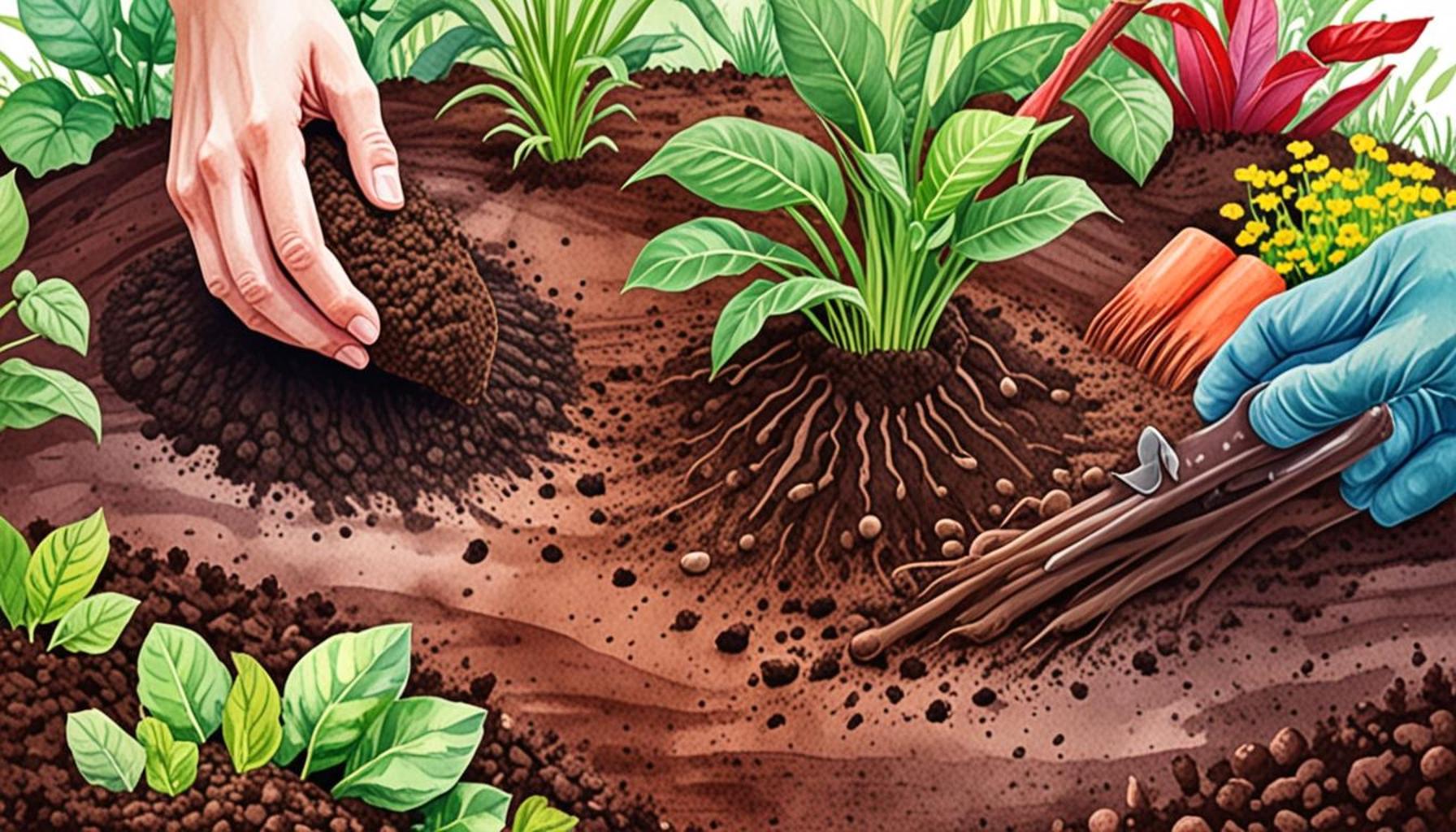Soil Preparation in Different Seasons: What to Know for Each Time of Year

The Vital Role of Seasonal Soil Preparation
Soil serves as the backbone of any garden or farm, and its proper preparation throughout the year is crucial for a thriving ecosystem. Understanding how to tailor your soil management strategies to the specific needs of each season can mean the difference between meager yields and thriving plants. As we navigate through the seasons, let’s explore what steps can be taken to ensure optimal soil health.
Spring: Awakening the Soil
As the frost recedes and the days grow longer, spring signals a time of awakening for both soil and plants. Begin by testing your soil’s pH levels, as this can significantly affect nutrient availability. Most garden plants thrive in a slightly acidic to neutral pH (around 6.0 to 7.0). Based on the results, you may need to amend your soil with lime to raise pH or sulfur to lower it.
Clearing away any winter debris—such as dead leaves and branches—prevents the harboring of pests and diseases. Enhancing soil fertility is paramount during this time. Incorporating organic matter like well-rotted manure or compost not only boosts nutrient levels but also improves soil structure, making it looser and more conducive to root growth.
Summer: Nurturing Growth
Summer is a time when plants are in full swing, necessitating focus on moisture retention and soil health. Mulching around plants can help reduce evaporation, keeping your soil moist during the sweltering months. Additionally, it can thwart weed growth that competes for nutrients and water.
It is critical to monitor your soil for signs of erosion or nutrient depletion, particularly after heavy rainfall. Practices such as contour farming or planting in raised beds can help mitigate erosion, while regular fertilization with slow-release organic options can replenish lost nutrients.
Autumn: Preparing for Dormancy
As the leaves begin to fall, autumn presents an opportunity to prepare your soil for winter. This season is an excellent time to plant cover crops, such as clover or vetch, which can enrich the soil with nitrogen and prevent soil erosion during the harsher months. These cover crops provide essential organic material when tilled back into the soil in spring.
Incorporating mulch can additionally protect your soil from harsh winter winds and temperature fluctuations, ensuring that microorganisms necessary for decomposition remain active even in cooler temperatures.
Winter: Sustaining Soil Health
While it may appear that winter brings a halt to gardening activities, there are still crucial steps to take to maintain soil health. Proper composting during this time can produce rich organic matter to be added to your soil in the spring. Composting kitchen scraps and yard waste not only limits landfill contributions but enriches your garden’s soil once established.
Planning your garden or farm layout for the next season during winter allows for a thoughtful approach to plant selection and soil management techniques. Investigate the local climate and soil composition to tailor your practices effectively. When you understand these factors, you empower yourself for the best possible outcomes when planting resumes.
In conclusion, whether you are a novice gardener or an experienced farmer, recognizing the appropriate soil preparation techniques for each season can dramatically enhance your gardening journey. By engaging with nature’s rhythm throughout the year, you can cultivate a flourishing landscape that benefits not only your plants but also the broader ecosystem.
DISCOVER MORE: Click here to learn sustainable harvesting methods
Essential Strategies for Seasonal Soil Management
As each season unfolds, the soil beneath our feet undergoes its own transformations, necessitating tailored strategies for optimal soil preparation. Each time of year presents specific challenges and opportunities that can either fortify or weaken soil health. By understanding the dynamic nature of the soil throughout the seasons, you can cultivate a more productive and sustainable garden or farm. Let’s delve into what you can do during each season to enhance soil vitality.
Spring: Revitalizing the Ground
As the earth thaws and life returns to the landscape, spring becomes a crucial period for soil revitalization. The first step is to engage in a thorough soil test. This not only assesses pH but also helps identify nutrient deficiencies. A balanced soil is foundational—consider adding amendments like phosphorus or potassium, which are often lacking in newly thawed soil. Here’s how you can prepare your soil for this vibrant season:
- Test Soil: Check pH and nutrient levels.
- Clear Debris: Remove remnants of winter to prevent disease.
- Add Organic Matter: Incorporate compost or aged manure to enrich soil.
- Loosen the Soil: Tilling can help aerate compacted areas.
These actions not only ready your soil for planting but also contribute to a resilient ecosystem. Remember that the goal at this stage is to establish a fertile base that encourages robust plant growth.
Summer: Steadying Growth and Maintenance
As plants enter their growth phase, maintaining the soil’s moisture levels becomes paramount. Summer can be harsh, with periods of intense sunlight causing rapid evaporation. Here are some effective strategies for summer soil care:
- Mulching: Use organic mulch to regulate temperature and retain moisture.
- Soil Monitoring: Regularly check for erosion and nutrient loss, especially after rain.
- Slow-Release Fertilizers: These fertilizers are essential when plants need continual nutrition.
- Crop Rotation: This practice can enhance soil structure and reduce disease pressure.
Engaging with these techniques during summer not only nurtures your current crops but also prepares the soil for subsequent planting. The right practices can yield bountiful harvests while minimizing the need for excessive inputs.
Autumn: The Time for Restoration
As crops begin to wane and leaves change color, autumn provides a valuable opportunity for restoring soil health in preparation for winter. This season is ideal for planting cover crops, which offer numerous benefits:
- Nitrogen Fixation: Cover crops like clover and vetch naturally enrich the soil.
- Erosion Prevention: Roots hold soil in place during inclement weather.
- Soil Structure Improvement: Tilling cover crops under in spring yields organic matter that boosts soil texture.
Additionally, applying mulch during this time protects the soil from harsh winter elements. By taking these proactive measures, you can ensure your soil remains fertile and ready for the next planting cycle.
Understanding and implementing these seasonal soil preparation strategies can significantly influence your gardening or farming success. With each season comes the responsibility to nurture the soil, ensuring it remains a vibrant environment for growth.
Soil Preparation Techniques for Each Season
Spring Soil Preparation
As winter fades and temperatures rise, spring offers a crucial time for soil preparation. This season demands thorough work to revitalize the soil after colder months. Start by conducting a soil test to assess nutrient levels and pH balance. Incorporating organic matter, such as compost or well-rotted manure, enhances soil fertility. Tilling the soil lightly will aerate it, promoting seed germination and root growth. Additionally, eliminate weeds early to reduce competition for nutrients and moisture.
Summer Soil Maintenance
During summer, the focus shifts to maintaining soil health amid warmer conditions. Implementing mulching techniques can help retain moisture and regulate soil temperature. Regular watering and monitoring moisture levels are essential during this hot season. Consider cover cropping to prevent erosion and improve soil structure. This practice not only enriches the soil but also fosters biodiversity, making it an avenue worth exploring for any enthusiastic gardener or farmer.
Fall Soil Prep
As autumn approaches, prepare the soil for winter by focusing on conservation strategies. Adding nutrients like phosphorus and potassium can boost soil resilience. Building raised beds in preparation for winter crops can also be beneficial. Incorporating fallow periods or planting cover crops like clover helps restore nitrogen levels, feeding your soil as it lays dormant. These strategies ensure that the soil remains nurtured throughout the colder months, setting the stage for success in spring.
Winter Soil Care
Winter can be a quiet time for soil, but proactive measures can enhance its quality. Avoid heavy foot traffic on wet soil to prevent compaction. Utilizing winter cover crops can protect against erosion and enhance organic matter content. Implementing green manures serves to fix nitrogen and suppress weeds, promoting healthier soil. These practices pave the way for robust soil come spring, ensuring your garden is vibrant and productive throughout the growing season.
| Category | Benefits |
|---|---|
| Spring Preparation | Enhances soil fertility and promotes early growth. |
| Summer Maintenance | Retains moisture and prevents erosion. |
| Fall Strategies | Boosts nutrient levels and prepares for winter. |
| Winter Practices | Protects soil structure and enhances organic content. |
Understanding the nuances of soil preparation across each season is essential for any gardener or farmer. These techniques promote long-term health and productivity of soil, ensuring your planting efforts yield the best results throughout the year.
LEARN MORE: Click here to discover effective harvesting techniques
Winter: The Season of Reflection and Preparation
As the chill of winter sets in, many gardeners and farmers may feel the urge to retreat indoors, but this season also holds opportunities for soil preparation. Winter is not merely a time of dormancy; instead, it can serve as a phase for reflection and strategic planning in your gardening endeavors. While the ground may be frozen, you can take essential steps to get ready for the upcoming growing seasons.
Essential Winter Practices
This time of year presents a chance to evaluate the successes and challenges experienced in the previous growing season. Start with a soil health assessment, focusing on organic matter content and potential pest issues. Use these reflections to chart your soil management course for the coming year. Here are some ways to care for your soil during winter:
- Cover Crops: If you haven’t already, sow winter cover crops such as rye or hairy vetch. These not only prevent soil erosion but also protect against nutrient leaching during heavy rains, maintaining the soil’s health.
- Soil Amendments: Winter is the perfect time to plan for amendments. Gypsum can be applied to improve soil structure and drainage if you are dealing with clay-heavy soil.
- Plan Crop Rotation: Take this time to strategize your crop rotation. Planning diverse crops can boost soil fertility and decrease pest populations during spring planting.
- Composting: Utilize this downtime to prepare a compost pile with kitchen scraps and yard waste, ensuring a nutrient-rich amendment is available when spring arrives.
Winter can also be a time for educational growth. Consider attending workshops or reading up on the latest agricultural methods, which can inform your soil management practices when the cycle begins anew.
Considerations for Regional Conditions
It is important to remember that soil preparation during winter can vary based on regional climates. Areas with milder winters may allow for continued soil management activities, while regions with deep freeze might require a more laid-back approach:
- Warm Climates: In warmer regions, consider keeping your garden space active with winter vegetables or cover crops that thrive in milder temperatures.
- Cold Climates: For those in colder climes, focus more on inspecting your soil health and protecting existing organic matter to avoid nutrient depletion.
No matter where you are located, engaging with your soil during this quiet time can lead to remarkable impacts come spring. Utilize this season wisely to ensure your soil is primed and ready, setting the stage for fruitful growth in months to come.
As we move through the cyclical nature of the seasons, being aware of soil preparation strategies presents an invaluable opportunity for maximizing productivity. Embrace this journey of understanding the nuances of soil management—it is the foundation for your gardening success.
DON’T MISS OUT: Click here to learn how to protect your crops</a
Conclusion: The Year-Round Journey of Soil Preparation
In the grand tapestry of gardening and agriculture, soil preparation emerges as a pivotal focus throughout the year. From the brisk chill of winter to the warmth of summer, each season provides unique opportunities and challenges for nurturing this essential resource. Understanding the different soil preparation techniques tailored to each season can significantly enhance soil health, fertility, and productivity.
In spring, your soil awakens, begging for attention through actions like tilling and amending with organic matter, while summer demands vigilance as you manage moisture and nutrients during peak growing conditions. As autumn approaches, it’s time to reflect and rejuvenate your soil by incorporating cover crops and preparing for the harsher winter months. Even during winter, when many might consider the soil dormant, strategic planning ensures readiness for the forthcoming season.
Additionally, regional considerations underscore the importance of adapting your soil management practices. Whether you reside in the temperate Midwest, the arid Southwest, or the coastal Northeast, local conditions will dictate effective approaches to soil care. By reflecting on past successes and challenges while staying informed about evolving practices, you equip yourself with the knowledge to foster a thriving garden or farm.
Ultimately, diligent soil preparation sets the stage for fruitful growth and sustainable practices. So, regardless of the season, recognizing the critical role of soil management not only cultivates healthier plants but also contributes to a more vibrant ecosystem. Take charge of your soil journey and unlock the full potential of your gardening efforts, ensuring a bountiful yield year after year.


